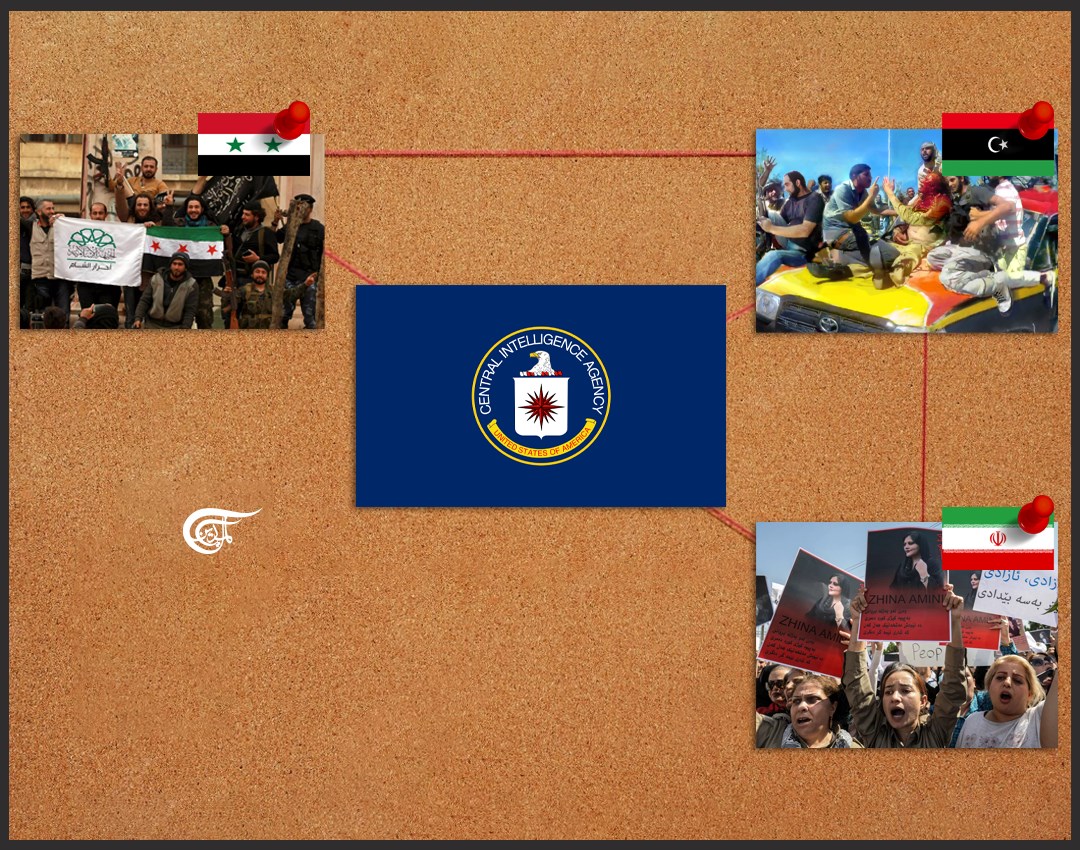The ‘Persian Spring’ – Libya and Syria script now playing out in Iran
Should the current disturbances eventually escalate into what would effectively be a proxy war on Iran, the regime change lobby will undoubtedly move towards calls for a Libya-style ‘humanitarian intervention’ to take place against the Islamic Republic.
Thursday’s admission by former US National Security Advisor and notorious Iran-hawk John Bolton, that weapons are being provided to those carrying out the latest regime change attempt taking place against Tehran, should come as little surprise.
Beginning on the 16th of September, less than 24 hours after Iran had joined the Shanghai Cooperation Organisation - an alliance intended to foster political, economic and military development in Eurasia - protests that initially started in response to the death of Mahsa Amini, a 22-year old Iranian woman who passed away at a hospital after fainting following a verbal altercation with a female police officer in Tehran, would rapidly escalate into violent riots that quickly swept the Islamic Republic.
The sudden, violent nature of these riots, and their coordinated coverage by Western media, bore all the trademarks of a CIA-orchestrated colour revolution, which would later be confirmed as such by the involvement of Masih Alinejad, a US Agent who previously held a meeting with former US Secretary of State Mike Pompeo – like John Bolton, another long-time supporter of regime change in Iran.
Indeed, the violent overthrow of Iranian leaderships has a historical precedent. In 1953, the MI6 and CIA-orchestrated Operation Ajax would see then-Prime Minister Mohammad Mosaddegh deposed following his decision to nationalise Iran’s vast oil reserves. The reigning king, Western-backed Shah Pahlavi, would himself be overthrown in the 1979 Islamic Revolution, which saw the anti-American and anti-Zionist Ayatollah Khomeini come to power, the Islamic Republic remaining a steadfast foe of the West ever since.
Bolton’s admission that arms are being provided to the "Iranian opposition", however, has a much more recent historical usage.
In February 2011, protests in Libya calling for government reform would quickly escalate into violent riots that soon swept the African state.
With weapons provided by the CIA and MI6 and the cover of a NATO-imposed No Fly Zone, terrorists would overrun the country in the space of eight months, with Libyan leader Muammar Gaddafi – whose planned ‘Gold Dinar’ currency had triggered the regime change operation - being lynched in a Sirte street in October of that year, his once thriving nation being reduced to a lawless wasteland.
Likewise in March 2011, a similar regime change operation would erupt in Syria, when terrorists armed by the US, Britain, "Israel" and Saudi Arabia took control of vast swathes of the Arab Republic, the casus belli being Bashar al-Assad’s 2009 refusal to allow US-ally Qatar to build a pipeline through his country, an arrangement that would have undermined his relationship with key ally Russia.
Unlike Libya however, Damascus has been able to withstand this regime change attempt for the past 11 years, with Assad remaining in power to this day. This was helped in no small part by an Iranian intervention in June 2013, with both Damascus and Tehran sharing a common defence agreement, and a further Russian air campaign that began in September 2015, again at the request of Damascus, which allowed the Syrian Arab Army to retake areas that had fallen under terrorist control, such as the key city of Aleppo.
This is where grim possibilities come into play in the similarities between Libya and Syria and what is currently taking place in Iran.
Should the current disturbances eventually escalate into what would effectively be a proxy war on Iran, the regime change lobby will undoubtedly move towards calls for a Libya-style ‘humanitarian intervention’ to take place against the Islamic Republic.
Possessing some of the most advanced air defence systems in the Middle East, any attempt to close Iran’s skies would undoubtedly lead to Tehran’s missile capabilities being put to use on Washington’s regional allies such as Israel and Saudi Arabia, turning a proxy war into a major regional conflict.
Indeed, Iran’s capabilities in this regard were already notably displayed in January 2020, when a retaliatory missile strike was launched against the Ain Al-Assad US airbase in neighbouring Iraq, in response to the drone strike assassination of Quds Force commander Qasem Soleimani.
Even the scenario of a major regional conflict, however, would be before even Iran’s own allies decided to become involved.
In March 2021, a 25-year cooperation deal was signed between Iran and nuclear-armed China in order to further relations in regards to the development of energy infrastructure. Following the Russian intervention in Ukraine earlier, Tehran and Moscow have also furthered their ties, with Vladimir Putin paying a visit to the Iranian capital in July.
The possibility that either Beijing or Moscow may decide to intervene should Western military action be taken against Iran is distinct, and therefore it is not just in Iran’s interest that the current disturbances are quelled as quickly as possible, but the entire world’s.

 Gavin O'Reilly
Gavin O'Reilly
 5 Min Read
5 Min Read












